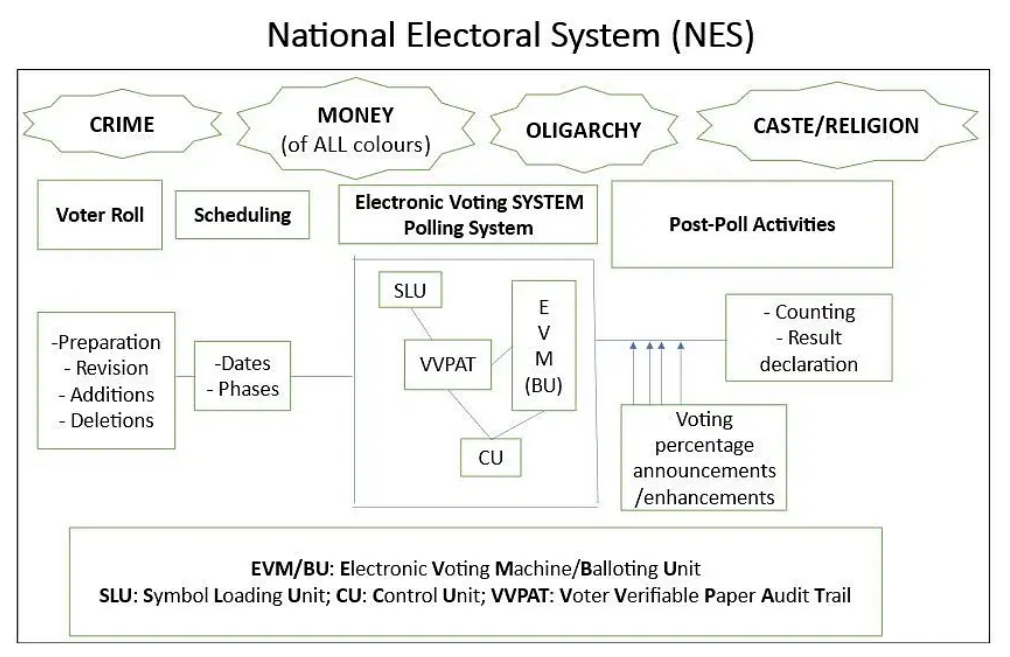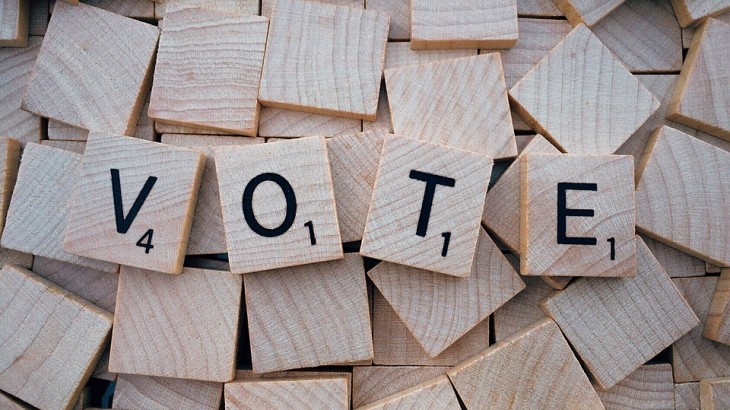In our excessive focus on EVMs we often fail to look at the other components that demand our attention and reform to improve India’s electoral process.
There has been a lot of debate in India about manipulation of elections, their results, and, in particular, about Electronic Voting Machines (EVMs). Ever since over a million EVMs were first used in all the 543 constituencies of the Lok Sabha in the 2004 elections, they have been a bone of contention. Beginning with the Bharatiya Janata Party (BJP) in 2010, there have been complaints galore, and continue.
The EVMs have always been touted as ‘stand-alone’ machines, whereas the fact is that it was always, from day one, a set of two machines: one EVM and one Control Unit. With continuing complaints and myriad court cases, first came the Voter Verifiable Paper Audit Trail (VVPAT) machines, accompanied by Symbol Loading Units (SLUs). The Election Commission of India (ECI) started calling the EVMs as Balloting Units. This system consisting of four machines is the Electronic Voting System (EVS) or Polling System.
The focus of the national debate, in which all political parties have participated, has been the EVMs. While it is true that the EVMs are a critical part of the election process, we cannot forget that there is more to an election than just the EVM. As poet Faiz Ahmad Faiz said, ‘Aur bhi dukh hain zamaane mein mohabbat ke siva’!
As we have learnt in the last few months, particularly in the 2024 Lok Sabha, the recent elections to the Haryana and Maharashtra assemblies, and byelections to some assemblies, a lot can, and possibly does, happen before the EVS comes into play and after the EVS has done whatever it is expected to do.
The chart below attempts to depict various activities which taken together form what should be called the National Electoral System (NES). The NES can be conceived to consist of four major components: Voter Roll, Scheduling, EVS, and Post-Poll Activities.

Voter Roll is referred to as the ‘soft underbelly’ of the electoral system. While it can be logically accepted that a truly l00% accurate voter roll cannot be expected given the size and mobility of our electorate, the kind of anomalies that have come to the surface in recent times, demand that much closer attention be paid to the voter roll. There have been reports of large scale, systemic deletions, additions, etc. and it is hard to dismiss all the reports as motivated actions of frustrated losers.
Beyond the voter roll, there is the question of how dates for elections for various assembly elections are fixed (Scheduling). Whether it is Gujarat and Jammu & Kashmir a few years ago, and Haryana and Maharashtra earlier this year, and many other examples, states which had gone to the polls together in the past are being held separately — this is a continuing mystery. Mysteries in the electoral process are always avoidable because they create doubts in the voters’ minds. A similar mystery operates when elections in one state during the Lok Sabha elections are held in seven phases and elections for the Assembly of that same state, in the same year, are held in just one phase!
Then we come to the EVS which, as has been said above, is critical component of the NES and which has, justifiably, received a lot of attention.
Finally, we have the Post-Poll Activities. The biggest bugbear in this is the counting process itself. Reports coming out of the counting centres indicate that all is not well with the ‘counting system’. Reports by counting agents who were apparently physically present at the counting centres show that several details of the specified counting process are given short shrift during the actual counting. In addition, we have all seen the continuing increase in polling percentages repeatedly up to 11 days after the poll.
A still unresolved mystery is the difference in votes cast and votes polled in the EVMs only, not including postal votes, in 538 out of 543 constituencies in the 2024 Lok Sabha elections, based on data displayed on the website of the ECI itself!
It is extremely important to keep in mind the overall environment in which the NES happens. One of the more ironic facts about our elections, which is almost always overlooked and never spoken about in real terms, is the use of security forces. The irony comes in when a so-called democratic exercise is held under the active watch of security forces. This leads to a strange situation where a battle of the ballot is fought under the shadow of the bullet!
The shadow of the bullet is needed because of the overall umbrella of crime, money (of all colours), oligarchy, and caste/religion under which the NES functions. Can there be a bigger folly than to expect ‘free and fair’ elections under such conditions?
It is high time that all those interested in this process of reclaiming democracy start paying attention to the overall National Electoral System rather than merely focusing on its individual components. We should not lose sight of the forest for the trees.
